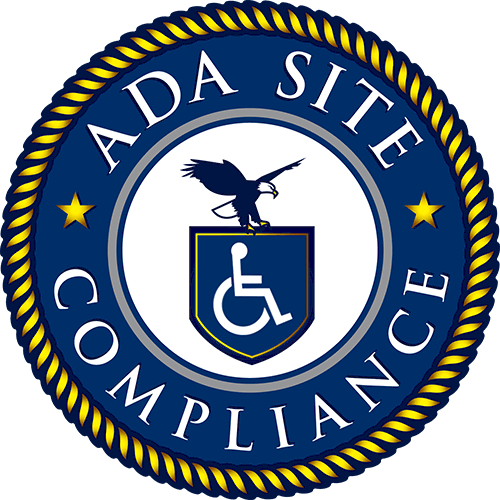Winn-Dixie is a well-known company that has caught the attention of the courts and consumers. The question is, Who will be next? The ADA clearly defined the businesses they target with Title III regulation. The websites for those establishments are likely the first place to start. Though any website that sells products and provides services online should shoot for full accessibility. There is a lot to think about in terms of making a WordPress site accessible. To begin, become acquainted with content accessibility guidelines WCAG. That is a defacto standard to be followed.
- Use text alternatives and descriptions for images, videos, and other media.
- Use closed captioning for the video.
- Make your site keyboard-friendly to eliminate the need to use a mouse or finger to move around it.
- Simplify navigation by adding breadcrumbs.
- Create a consistent layout.
- The design should have sharp color contrasts between the background and text.
- The use of symbols makes the purpose of key elements clear if visual impairments, such as colorblindness prevent color signals from directing users to where they want them to go.
- Use header tags for a clear organization of the text.
- Use clear labels for all form fields.
- Include text resizing capabilities.
- Enable voice search.
- Allow users to disable JavaScript.
There are two reasons website owners should care about accessibility: Everyone should have equal digital content access regardless of physical or mental abilities. There is the potential of being sued if you are not in compliance. Both reasons warrant your attention.

At ADA Site Compliance, we have had clients with legal documents in hand, asking for assistance with a web accessibility lawsuit. The documents are often vague about the ways a website fails to meet ADA compliance.
There is little context regarding the standards used to measure ADA compliance. Where did the document originate? Was it served by someone with too little to do trying to make some quick cash? Not everyone’s motivations for enforcing these guidelines are pure. However, the subject of ADA compliance is real in the lives of many people.
The ADA Site Compliance team is an expert in the intricacies and guidelines of ADA compliance. The goal is to help businesses avoid and mitigate compliance lawsuits. If you are worried about a website’s legal exposure, scan your site for free. We will help make your website usable and accessible to all potential visitors.
WordPress Accessibility Tips
 WordPress site developers spend a lot of time thinking about website optimization. They question if the site is fast enough, if the layout is intuitive, if the images are the right resolution and size, and if the content is interesting.
WordPress site developers spend a lot of time thinking about website optimization. They question if the site is fast enough, if the layout is intuitive, if the images are the right resolution and size, and if the content is interesting.
These are all elements of importance. Sometimes developers fail to pay enough attention to website accessibility. Things to consider are – can everyone quickly gain access to a website, can it be navigated without problems, and how to offer solutions for people with disabilities?
Web Content Accessibility Guidelines include the POUR approach. A site must be Perceivable, Operable, Understandable, and Robust. User interface and information components must be presented in a perceivable way.
Navigation and interface components must be usable regardless of the method or device used to access them. User interface and information, such as forms, links, and navigation, must be understandable by all website visitors.
Making a site robust means it can be reliably understood and read by all website users. These are the core principles of accessibility. If any of them are not respected, the site will not be usable by those with disabilities. Here are 12 tips to make your WordPress website ADA-compliant.
To meet WCAG (Web Content Accessibility Guidelines), new or updated coding is required. Contact ADA Site Compliance to help you get your website completely accessible for others with a disability and avoid a lawsuit.
We will incorporate many useful features. It allows users to skip links and directly land on content pages. The functionality is helpful to screen reader users. A toolbar allows the visually impaired to change the contrast, grayscale, and font size.
Use text alternatives and descriptions for images, videos, and other media
If a web design contains video or audio files, using transcriptions, descriptions, and captions helps increase the site’s accessibility rate. Captions play an essential role for users of a website who suffer from hearing impairments. It is also helpful for those who are unfamiliar with a language or accent.
Avoid auto-playing media. It is confusing and irritating for users with cognitive impairment. A media file with audio can interfere with a screen reader’s working process and affect the user’s experience. Include media elements in plugins. They do not affect WordPress accessibility.
Add appropriate captions and alt-text to images. The functionality allows describing the function and appearance of an image. Initially, the technique was meant to increase screen reader accessibility by interpreting an image. It is now part of a search engine optimization strategy to be recognized and identified by search engine crawlers.
Do not use ALT text to stuff keywords on a WordPress site. Clearly describe the image by incorporating useful keywords. Solid HTML code makes a website more accessible. Incorporate title tags, bulleted lists, and proper headings with ALT tags and well-written meta descriptions.
Use closed captioning for video
To add a closed caption VTT file to a previously embedded video file, choose ‘Media’ from the WordPress dashboard, and select ‘Add New.’ Select or drag and drop the VTT file you wish to upload. The file should contain no styling. JW Player does not support it.
You can see the file you uploaded. Select ‘Edit.’ Go to the file URL, Control A, and then copy the URL. Select ‘Library’ in the left navigation. Scroll down to select the video for which you want to embed the VTT file. In the caption field, paste the text of the URL you copied.
Make your site keyboard-friendly to eliminate the need to use a mouse or finger to move around it
WordPress provides accessibility plugins that do not require refactoring a website’s existing code and increases ADA, WCAG 2 0, WCAG 2.1, Section 508, and ATAG requirements. ADA Site Compliance will help you instantly strengthen weak spots that may cause issues. We will help you create a simple, more accessible browsing experience for those with mobility issues.
Many people cannot use a pointing device or mouse. They rely on a keyboard to navigate sites. A website should be fully navigable using a keyboard’s enter key, arrow keys, tab key, and space bar. Our widget makes smart element modifications on a website identified as potentially non-compliant or could prevent keyboard-only navigation.
Simplify navigation by adding breadcrumbs
Breadcrumbs help make it easier for users to navigate a site. There are many benefits to breadcrumbs for the secondary navigation. They show users their location on a website and give them one-click access to higher website levels. The breadcrumbs are not as beneficial for blog posts because they are only one level deep.
Besides helping visitors, breadcrumbs make it easier for Google to do a crawl of an entire website. The breadcrumbs link to specific site sections that Google can easily follow. They help get in Google’s organic search results with a cleaner look than a raw URL.
Create a consistent layout
The different web page parts need to be easy to locate and identify. Text, links, and navigation sections are included in the web design. They should be consistently recognized and in predictable locations. Instructions and form labels also need to be clearly associated with controls.
The people who depend on a straightforward web design and layout include those with low vision who use screen magnification and see only a portion of the screen when viewing and those with learning and cognitive disabilities who need consistency and clarity to orient themselves on a site.
The design should have sharp color contrasts between the background and text
A beautiful website requires the use of color. Not everyone sees color in the same manner. Checking color contrast and the use of color is important. Check the contrast of color between the text and background.
Color should not be the sole indicator of function and information. A WordPress site should be grayscale and usable. Color combinations, such as neon-yellow and bright green or too-high color contrast, are uncomfortable. For most people, light background for dark fonts is the easiest to read.
When using a dark background and light font, the font should be larger than what might otherwise be chosen, so it is easy to read. Color contrast is an issue of importance to address for website accessibility.
It should be considered for a blog, text, images, and other elements and between hover effects and elements. Color contrast needs to be high enough for excellent readability but not too bright for those with cognitive problems or sensitive eyes.
The WordPress project follows the level AA of WCAG 2 0. It is acceptable to use color to differentiate between a page’s elements. Avoid using it as the only means of determining parts of the page visually. Use styling to mark information or a function that includes a change of decoration or shape. In addition to color, change symbols. Underline embedded links in the text.
The use of symbols makes the purpose of key elements clear if visual impairments, such as colorblindness prevent color signals from directing users to where they want them to go
One way to accommodate users who access a website in multiple ways like a screen reader, keyboard, or mouse is to use distinct styles for buttons and links. They need to be easy to identify. Users should understand at a glance what elements are clickable or in focus. Menu items and buttons need to be accessible through the mouse and keyboard.
The menus and buttons should be effortlessly accessible by the keyboard and mouse. Visitors should be able to highlight links with both pieces of hardware. Include skip links at the top of every page. Forms should have a label. Offer input assistance with a confirmation or warning message that is easy to recognize, even for those who are colorblind.
Use header tags for a clear organization of the text
WordPress has a Heading Block to organize posts, a blog, and pages to make following content easier for users to read. It is significant for a long blog, pages, and posts. The ‘i’ icon in the editor toolbar is used to view errors and heading sizes that are incorrect. Headings are more than large, bold text. They are a means of breaking content into logical sub-sections.
Screen reader users rely on them. The JAWS screen reader automatically creates a list of headings for a page. The list allows users to scan page content in a way similar to that of a sighted person. Headers are used for SEO or presentational effect. It is important to use heading tags logically.
Use clear labels for all form fields
Screen reader software toggles from a reading mode to an interactive form mode automatically when it encounters a <form> tag. It may not render text explicitly associated with the form control. Any text using <p></p> tags might be ignored. Those using screen readers may have to make two passes to extract all the visual information – first in the form mode, then in reading mode.
It causes a significant accessibility barrier. All forms need to ensure content within <form></form> tags are associated with a form through a <label> tag, and an id and it’s for an attribute within a relevant input tag. Do not use plain tests within a form block.
Include text resizing capabilities
Having accessible plugins and an accessible theme does not guarantee a website is accessible. Content must be accessible also. The accessibility expert developer needs to understand how the WordPress native accessibility tool is used, smart design decisions, and ADA compliance.
The plugin’s most outward feature is a toolbar with font size adjustment that helps users read the content. To make a WordPress website accessible to users with disabilities, provide text alternatives for non-text content on a website.
Enable voice search
There is a Voice Search plugin for developers to install and activate. When activated, it works out of the box. You do not have to configure special settings. Go to the admin area and select ‘Widgets.’ Add the default search widget as a sidebar. If there is a search widget already added, there is not to do. On the website, there will be a microphone icon in the search box. Click on the icon to see ‘Start Talking.’ Users say the words for which they want to search.
Allow users to disable JavaScript
Nearly all websites use JavaScript. Disabling it causes users to miss out on some content. There are instances when users want to disable it. One reason is for security purposes. Another is to prevent displays of annoying ads. Others include platform support, usability, making a website more accessible, bandwidth and speed, and website development.
Security and anonymity are primary concerns. JavaScript has vulnerabilities that malicious websites can exploit. It is a popular programming language with a massive community behind it. To feel safe, enable it only on reliable websites.
Concluding Thoughts
ADA Site Compliance provides document and website accessibility solutions for governments and businesses. Our experts help make and keep digital assets accessible.
Proper website accessibility ensures all disabled users have easy access to a website. An easily navigable eCommerce site paves the way toward a better user experience for potential visitors. Optimizing a website reaps benefits toward best SEO practices.
Because making a site accessible is quite a task, ADA Site Compliance offers WordPress development services that help create a website fully accessible to everyone. Building an accessible WordPress site requires additional workflow steps that we are experts at.
Share via:

Speak With An Expert Now
Have a question?
We’re always here to help.
The ADA prohibits any private businesses that provide goods or services to the public, referred to as “public accommodations,” from discriminating against those with disabilities. Federal courts have ruled that the ADA includes websites in the definition of public accommodation. As such, websites must offer auxiliary aids and services to low-vision, hearing-impaired, and physically disabled persons, in the same way a business facility must offer wheelchair ramps, braille signage, and sign language interpreters, among other forms of assistance.
All websites must be properly coded for use by electronic screen readers that read aloud to sight-impaired users the visual elements of a webpage. Additionally, all live and pre-recorded audio content must have synchronous captioning for hearing-impaired users.
Websites must accommodate hundreds of keyboard combinations, such as Ctrl + P to print, that people with disabilities depend on to navigate the Internet.
Litigation continues to increase substantially. All business and governmental entities are potential targets for lawsuits and demand letters. Recent actions by the Department of Justice targeting businesses with inaccessible websites will likely create a dramatic increase of litigation risk.
Big box retailer Target Corp. was ordered to pay $6 million – plus $3.7 million more in legal costs – to settle a landmark class action suit brought by the National Federation of the Blind. Other recent defendants in these cases have included McDonald’s, Carnival Cruise Lines, Netflix, Harvard University, Foot Locker, and the National Basketball Association (NBA). Along with these large companies, thousands of small businesses have been subject to ADA website litigation.
Defendants in ADA lawsuits typically pay plaintiff's legal fees, their own legal fees for defending the litigation, and potential additional costs. In all, the average cost can range from tens of thousands of dollars, to above six figures. There are also high intangible costs, such as added stress, time and human capital, as well as reputational damage. Furthermore, if the remediation is incomplete, copycat suits and serial filers can follow, meaning double or triple the outlay. It's vital to implement a long-term strategy for ensuring your website is accessible and legally compliant.



